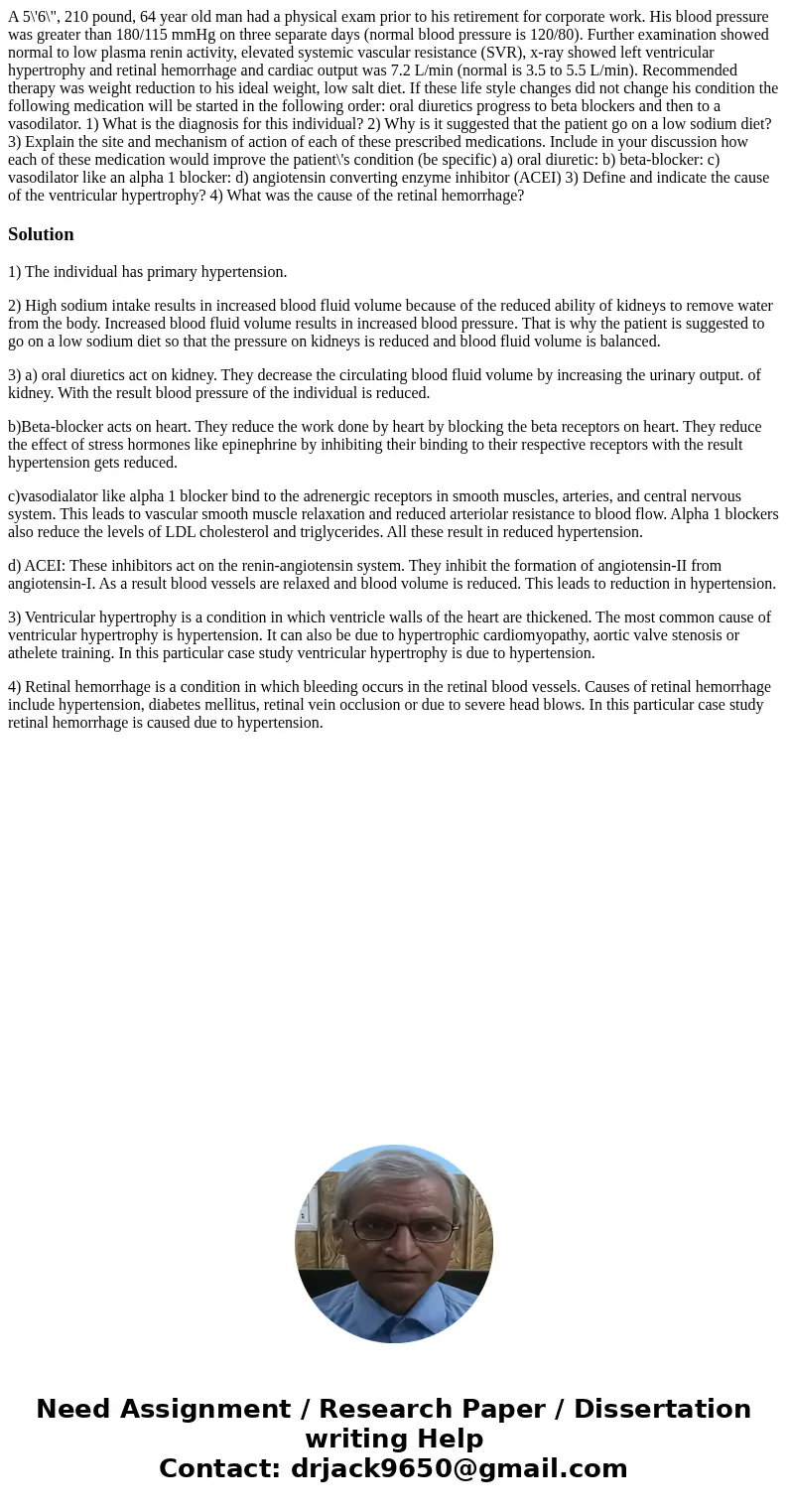A 56 210 pound 64 year old man had a physical exam prior to
Solution
1) The individual has primary hypertension.
2) High sodium intake results in increased blood fluid volume because of the reduced ability of kidneys to remove water from the body. Increased blood fluid volume results in increased blood pressure. That is why the patient is suggested to go on a low sodium diet so that the pressure on kidneys is reduced and blood fluid volume is balanced.
3) a) oral diuretics act on kidney. They decrease the circulating blood fluid volume by increasing the urinary output. of kidney. With the result blood pressure of the individual is reduced.
b)Beta-blocker acts on heart. They reduce the work done by heart by blocking the beta receptors on heart. They reduce the effect of stress hormones like epinephrine by inhibiting their binding to their respective receptors with the result hypertension gets reduced.
c)vasodialator like alpha 1 blocker bind to the adrenergic receptors in smooth muscles, arteries, and central nervous system. This leads to vascular smooth muscle relaxation and reduced arteriolar resistance to blood flow. Alpha 1 blockers also reduce the levels of LDL cholesterol and triglycerides. All these result in reduced hypertension.
d) ACEI: These inhibitors act on the renin-angiotensin system. They inhibit the formation of angiotensin-II from angiotensin-I. As a result blood vessels are relaxed and blood volume is reduced. This leads to reduction in hypertension.
3) Ventricular hypertrophy is a condition in which ventricle walls of the heart are thickened. The most common cause of ventricular hypertrophy is hypertension. It can also be due to hypertrophic cardiomyopathy, aortic valve stenosis or athelete training. In this particular case study ventricular hypertrophy is due to hypertension.
4) Retinal hemorrhage is a condition in which bleeding occurs in the retinal blood vessels. Causes of retinal hemorrhage include hypertension, diabetes mellitus, retinal vein occlusion or due to severe head blows. In this particular case study retinal hemorrhage is caused due to hypertension.

 Homework Sourse
Homework Sourse